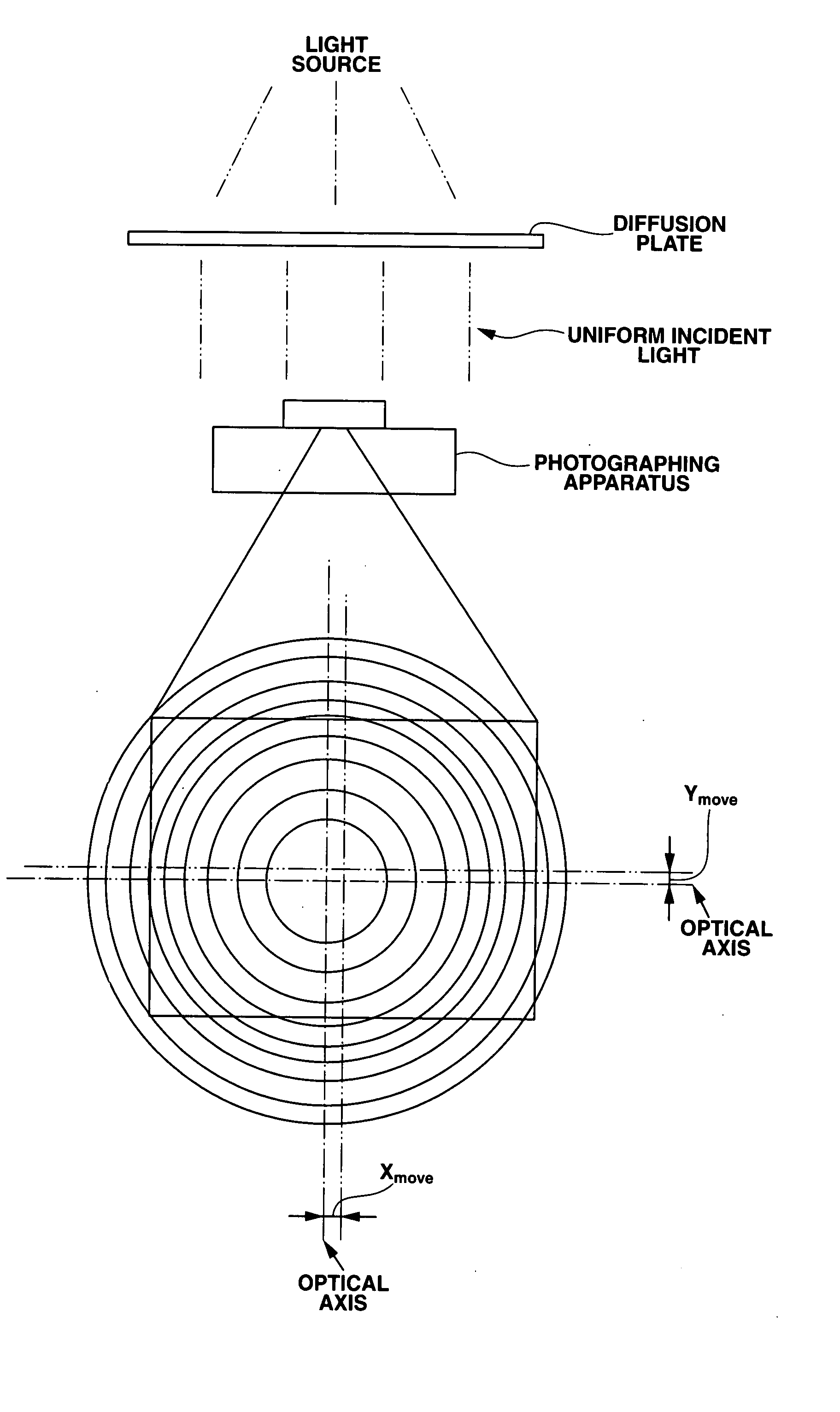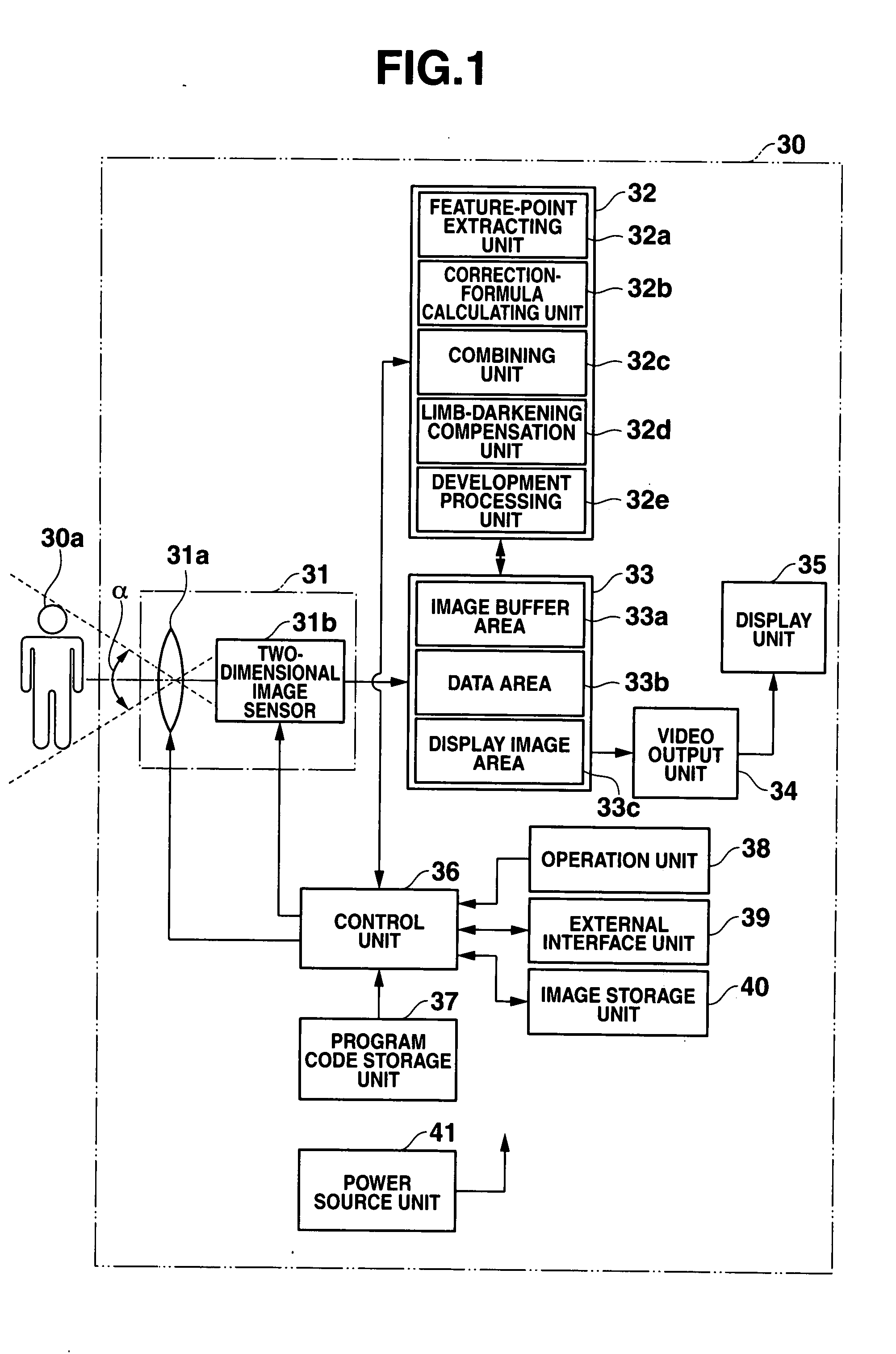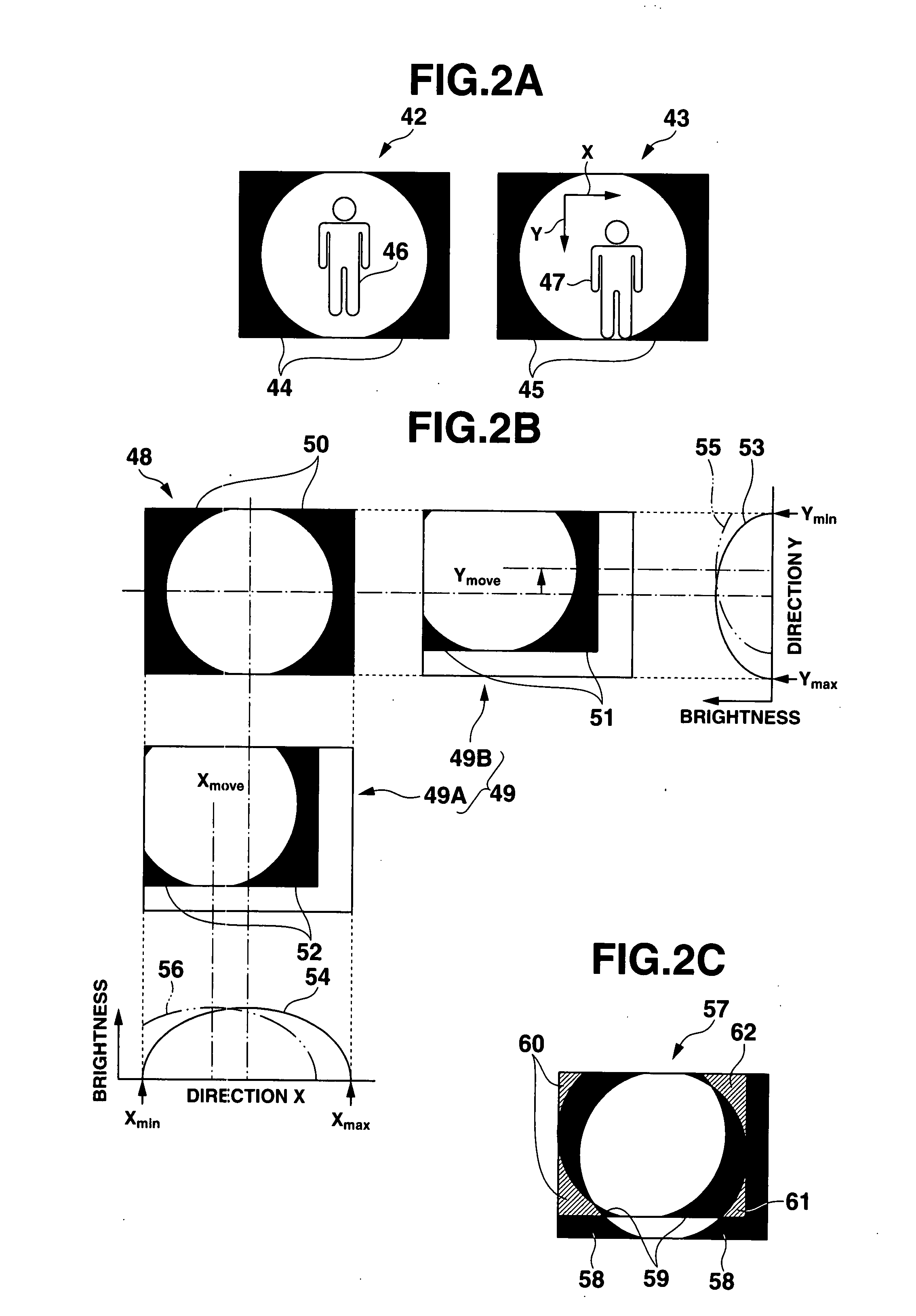Imaging apparatus with function of shading compensation
a technology of limb darkening and compensation, which is applied in the direction of exposure control, printing, instruments, etc., can solve the problems of inability to solve problems, long time to compensate for limb darkening of an optical system, and first conventional techniqu
- Summary
- Abstract
- Description
- Claims
- Application Information
AI Technical Summary
Benefits of technology
Problems solved by technology
Method used
Image
Examples
first embodiment
of the Invention
[0061]FIG. 1 is a block diagram showing a configuration of a digital camera.
[0062] The digital camera 30 comprises an image pick-up unit 31, image processing unit 32, memory unit 33, video output unit 34, display unit 35, control unit 36, program code storage unit 37, operation unit 38, external interface unit 39, image storage unit 40 and power source unit 41.
[0063] The image pick-up unit 31 has an optical system 31a and a two-dimensional image sensor 31b. The optical system 31a includes a photographic lens which comprises a single lens or an assembly of plural lenses, aperture adjustment mechanism, focus adjustment mechanism, and a zoom mechanism for adjusting an angle “α” of view (or focal length). The two-dimensional image sensor 31b consists of a semi-conductor device such as CCD sensor and CMOS sensor.
[0064] Operation of the image pick-up unit 21 is controlled in accordance with instructions of photographing operation sent from the control unit 36. The opera...
second embodiment
of the Invention
[0163] In general, brightness at an optical axis of the optical lens is used as reference brightness, and limb-darkening compensation is made with reference to such reference brightness. In average cameras, there is slight displacement between the optical axis of the lens and the center of a light receiving plane (image pick-up plane of the two-dimensional image sensor 31b). Therefore, common data cannot be compensated for correctly.
[0164] In the case if the displacement between the optical axis of the lens and the center of a light receiving plane is detected in each camera, each camera is used to take a picture with a complete light-diffusion plate provided thereon in uniform incident-light conditions, and the center of the picture is calculated from the picture data. This troublesome process can be bars in production line.
[0165] The second embodiment of the invention provides a method of calculating a limb-darkening compensation value common to individual camera...
third embodiment
of the Invention
[0176]FIGS. 10A, 10B and 10C are views illustrating an idea of a digital zoom technique.
[0177] In the case of the digital zoom technique which enlarges a photographed image at an arbitrary enlarging ratio, the limb darkening effect is caused in photograph data 65 due to characteristics of an optical lens, and an available area is only a center portion 67 of an imaging area 66 of the two-dimensional image sensor.
[0178] If the limb darkening compensation is made in the enlarged photograph image 65, calculation is possible based on compensation values due to the optical lens, whereby compensation is made over an image in an area expanding wider than the available area (center portion 67 of the imaging area 66 of the two-dimensional image sensor). Therefore, such compensation is not effective.
It will be more effective to make compensation for limb darkening in an image limited to the available area (center portion 67 of the imaging area 66 of the two-dimensional imag...
PUM
 Login to View More
Login to View More Abstract
Description
Claims
Application Information
 Login to View More
Login to View More - R&D
- Intellectual Property
- Life Sciences
- Materials
- Tech Scout
- Unparalleled Data Quality
- Higher Quality Content
- 60% Fewer Hallucinations
Browse by: Latest US Patents, China's latest patents, Technical Efficacy Thesaurus, Application Domain, Technology Topic, Popular Technical Reports.
© 2025 PatSnap. All rights reserved.Legal|Privacy policy|Modern Slavery Act Transparency Statement|Sitemap|About US| Contact US: help@patsnap.com



